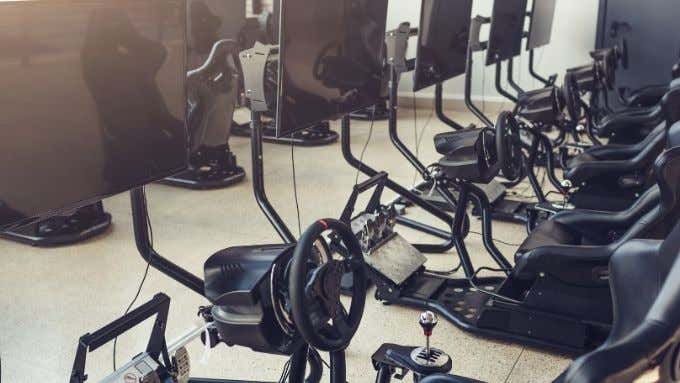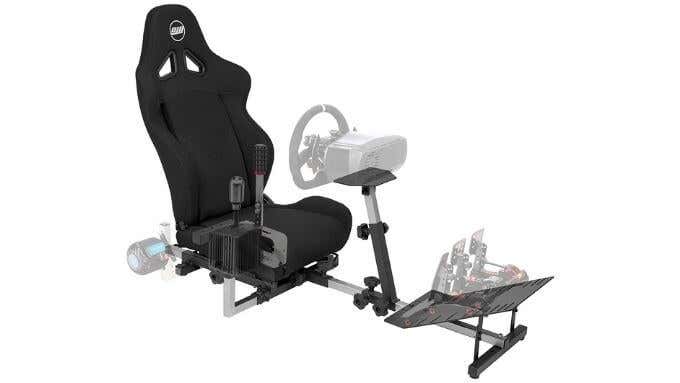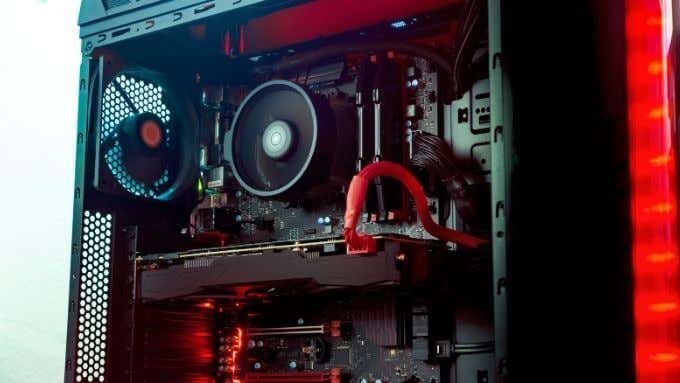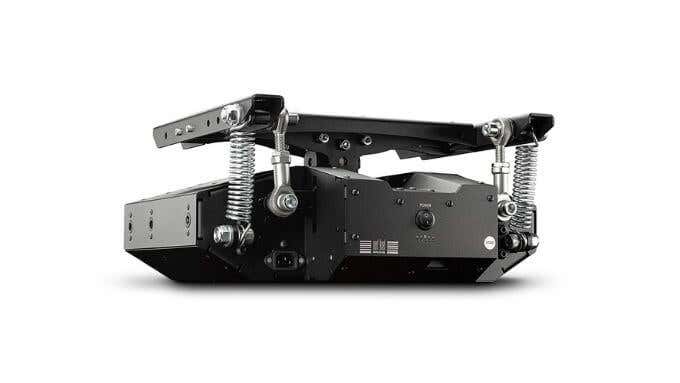VR has raised the octane levels
Gaming PCs these days pack a huge amount of computing power, which is why they can run the latest video games with astounding levels of realism and quality. That same gaming horsepower can also be applied to a different job: simulation.
There are many highly realistic racing simulation applications that make full use of all that power and racing enthusiasts are combining this with a new generation of (relatively) affordable racing sim hardware to create the ultimate hobbyist toy. A full-on home racing simulator setup good enough to train you for the big leagues is now within reach.
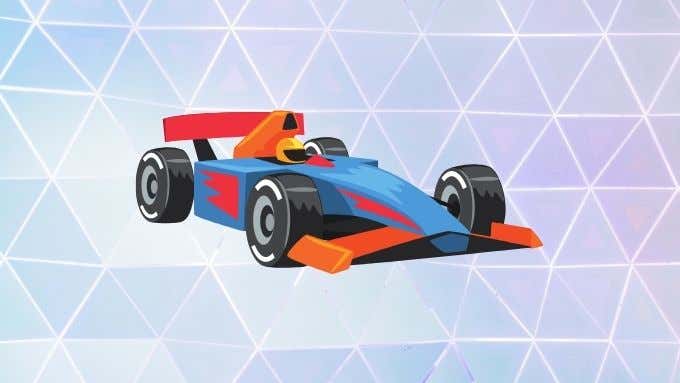
The Components of a Racing Simulator Setup
There’s no one universal rig that counts as a racing simulator. If you play using a normal gaming computer with a gamepad, that still counts! However, when the term “home racing sim” is thrown around it usually means the following:
- A computer with the right specifications (more on this later).
- A racing sim frame or cockpit.
- A steering wheel, shifter and pedals.
- One or more displays.
- A motion simulator (optional and high-end).
You don’t have to buy it all at once. You can start off with just a PC and a gamepad as mentioned. Then add a wheel and pedals, simply mounting them to your desk. When you’re ready to buy a frame (or a cockpit) you can transfer that gear over.
Using this piecemeal approach, you can ensure you buy the right sub-components of your racing simulator setup instead of buying cheap components first, which will later have to be replaced. Then again, it’s a valid approach to build a budget total solution as well if you only want to dip your toes.That’s the beauty of an open racing sim ecosystem where you can mix and match components as you need to.
The Frame Is Key
The heart of a home racing sim is undoubtedly the frame or the cockpit. What’s the difference?
Racing sim frames are the simpler solution. They provide mounting points for your wheel, shifter and pedals. In some cases they may also have a display mount, but the idea behind these frames is that you move them into place when you need them and move them aside when you don’t.
You’ll use your existing TV or monitor and (of course) your existing chair. It’s a great compromise between having floor space dedicated to your racing simulator setup and being able to share it with your normal computer gaming or work space.
A racing sim cockpit is a whole other level of commitment. With the exception of lightweight folding versions of racing cockpits, the standard design isn’t one you can easily move around. So you have to choose a spot and sacrifice it to the gods of racing for a more immersive experience. Some cockpits may include a mount for a computer monitor, but it’s also possible that you’ll have to purchase a monitor stand for that particular cockpit as an additional extra.
Speccing Out Your Computer
Despite all the fancy gear, the computer that you’re using to run the racing sim is a key component when it comes to how good the experience will be. One common mistake people tend to make is to emphasize GPU power for their sim computers. When it comes to mainstream video games, that’s a sensible approach.
However, simulation software is different from video game software in fundamental ways. Video games create the illusion of reality but as the name suggests, sims try to simulate reality accurately. That means a heavy emphasis on physics simulation and artificial intelligence.
As such, your racing sim computer needs to emphasize RAM and CPU cores, before other considerations. Of course, your main guiding light should be the recommended requirements of the specific racing simulation software you’re interested in, but whenever you budget your build should keep this emphasis on CPU power and memory in mind.
Going All Out with Motion Simulation
If you really want to reach the upper echelons of home racing sim technology, then you’ll have to consider buying a motion simulator, also known as a motion platform. However, the price tag on these devices is not for the faint of heart! Also, if you do want to leave your options open for a motion platform going forward you need to invest in a compatible cockpit from the outset.
So what do these motion platforms do? The exact capabilities differ from one model to the next, but in general they recreate in fine detail:
- Car body movement
- Road vibration and texture
- Collisions
- Gear changes, acceleration and braking
The illusion these systems can create is like digital voodoo, but transformative combined with the right cockpit and software. If you can stomach spending thousands of dollars on just this one component that is.
VR Is Changing Everything
For a long time, the gold standard for home racing simulators was a triple-monitor setup hooked up to a monitor stand. After curved monitors entered the market, ultrawide LCD screens offered the same wide field of view as triple-monitor setups, but without distracting bezels.
Now the ultimate racing sim display solution is a VR headset. Using a VR headset with your racing sim setup lets you complete the illusion. Total, realistic immersion is now possible and it doesn’t have to cost an arm and a leg. While high-end VR headsets can cost a thousand dollars or more, entry-level headsets such as the Oculus Quest 2 are an affordable way to get started at only $299.
In fact, there’s a strong argument to be made that a desk mounted wheel and pedals with a VR headset can be more immersive than a cockpit using a mounted screen. That’s clearly a matter of personal opinion, but VR headsets have opened up an entirely new set of options in the racing sim world and you can’t ignore the technology within the hobby.
The Top Racing Sim Software
Racing simulator software comes in all flavors and with different levels of simulation fidelity. For example, on the console side of things you’ll find titles such as Gran Turismo (PlayStation) and Forza (Xbox) which offer robust racing simulation and support for a limited set of racing wheels for use with consoles. You can definitely combine those console-based sims with a cockpit,pedal and wheels for a great experience. This is shown off to great effect with initiatives such as the Gran Turismo Academy.
On the PC side of things, it gets much more serious. The biggest name right now is quite possibly iRacing. It’s more than just a simulator, it’s an entire online racing community and a competitive league. Many would say iRacing is as real as it gets, but there are other serious and semi-serious titles to choose from.
Assetto Corsa Competizione is a name that comes up often in conversation, but you can also play something like Forza Motorsport 7 on PC. Since it’s a multiplatform release.
Project Cars 2 should be on the shortlist and don’t forget about the official F1 racing games. Not all of them have VR support, but it’s being rapidly included in serious racing sim software thanks to its growing popularity.
The idea of building a home racing simulator setup can seem daunting, but it’s not such a huge leap from playing some Gran Turismo on your PlayStation to having a full-fledged rig in your garage. Don’t say we didn’t warn you!

